Deprivation in Wales: How does your area measure up?
- Published
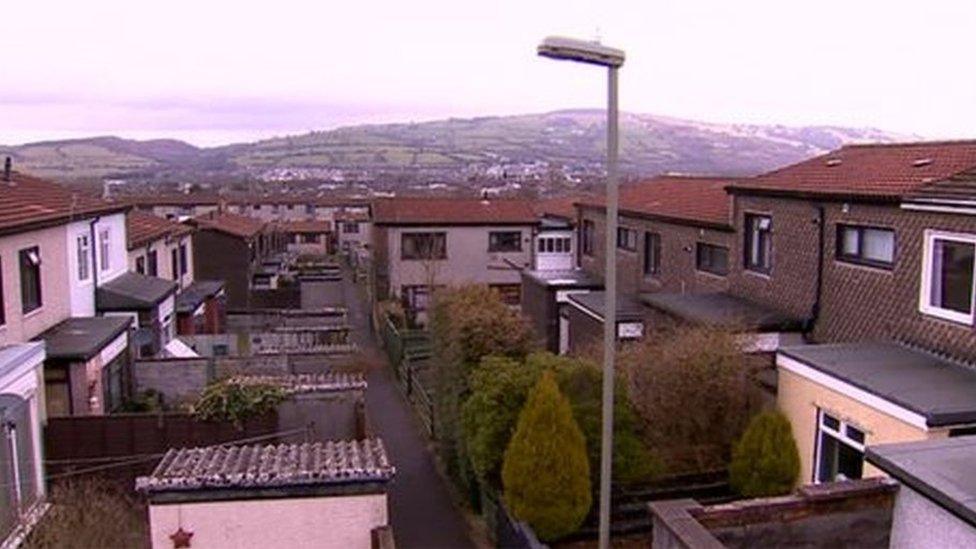
Part of Lansbury Park in Caerphilly has been ranked the third most deprived in Wales - in 2014 it was in the unenviable "top spot"
The western part of Rhyl is home to the most deprived communities in Wales, according to new official statistics.
Two wards in the Denbighshire town are the most deprived, based on eight factors including income, health, education and access to green space. The least deprived area is in Mold.
The Welsh Index of Multiple Deprivation (WIMD) is calculated every five years.
Part of the Lansbury Park estate in Caerphilly was the most deprived in 2014, but that is now in third place.
WIMD is the Welsh Government's official measure of "relative" deprivation for small areas - it does not measure the level of deprivation in that area, but whether it is more or less deprived than others.
It defines deprivation as the "lack of access to opportunities and resources which we might expect in our society".
There were pockets of "high relative deprivation" in southern cities and valleys and in some northern coastal and border towns.
How does your area compare?
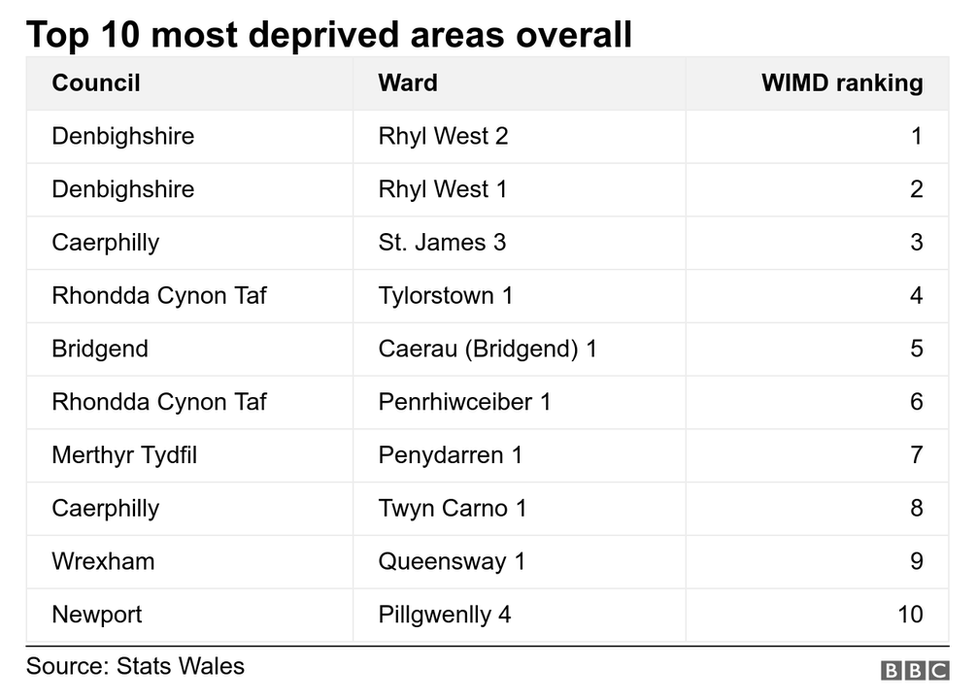
Newport had the highest proportion of areas (24.2%) in the most deprived 10% - in Blaenau Gwent, 40 of its 47 areas were in the most deprived 50%.
None of Monmouthshire's areas were in the top 10% of most deprived areas.
You can search for your ward, and how it ranks on the different measures, external using your postcode on the Welsh Government website.
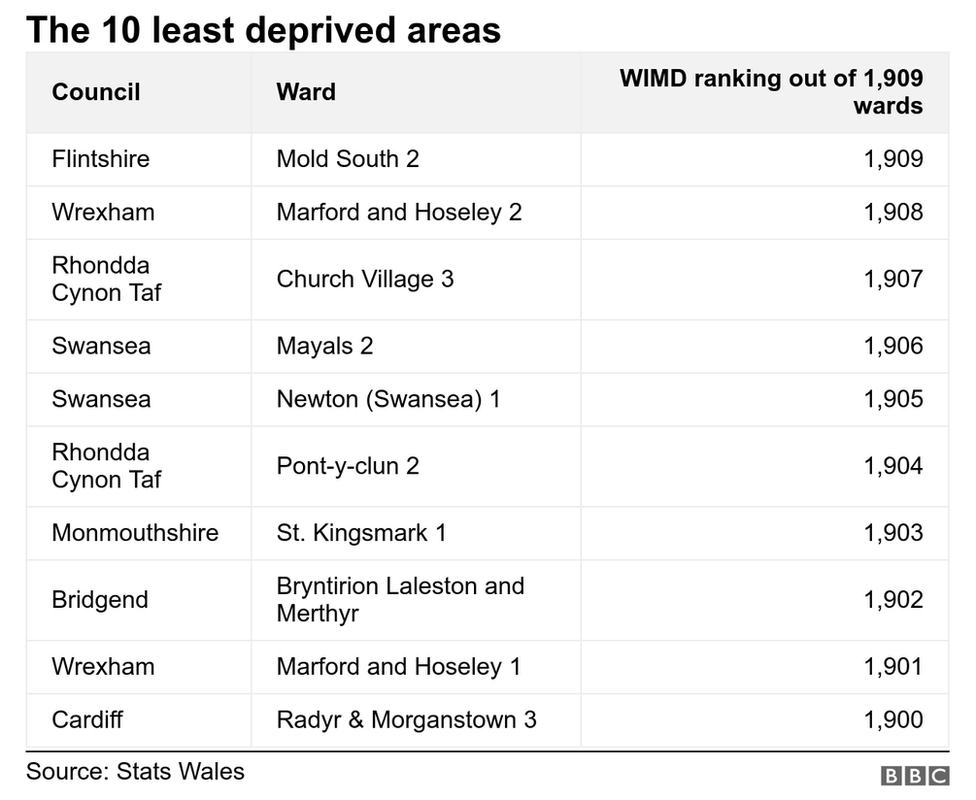
Newport has the highest proportion of most deprived wards despite having good communications, a university and being close to Cardiff and Bristol - the latter being the fastest growing UK city.
It also has a ward in the least deprived 20 in Wales, which serves as a reminder of the wide gap in opportunities that can be found in the same city in communities living cheek by jowl.
For housing deprivation, which includes the proportion of people living in overcrowded accommodation, nine out of 10 of the most deprived wards are in Cardiff.
For physical environment, which includes air quality and access to green space, 19 out of the 20 most deprived wards are in Newport and Cardiff - two of them very close to the M4's Brynglas tunnels.

A 'safe' place created for children to play
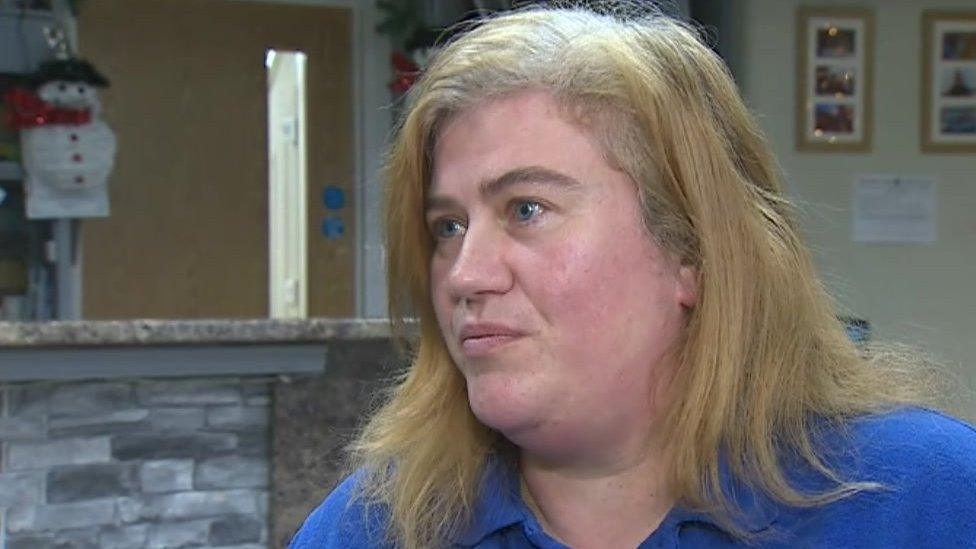
Marie Mitchell says the group helps reduce anti-social behaviour
Marie Mitchell, helps run the Brighter Futures project in Rhyl to offer the community and young people a place to socialise.
"I've seen more incidents of homelessness and incidents of people on Spice or drugs," she said.
"I'm reluctant to let my children play outside, I don't really want them witness someone who's zombified on Spice and things like that.
"I don't have anywhere safe for my children to play so that's why we have this youth group. I help volunteer here and it benefits not just my children, but others.
"The nights we are on, the incidents of anti-social behaviour have dropped because they [young people] are here, they are not on the streets."

Wards in Rhyl feature in the top 10 most deprived for health, education and income.
Rural communities have high levels of deprivation in terms of access to services, which includes travel times to amenities and broadband, particularly in Carmarthenshire, Powys, Pembrokeshire and Monmouthshire.
How do they calculate it?
The 1,909 areas analysed for the index are very small communities, each with between 1,000 and 3,000 people.
WIMD measures eight separate types of deprivation - placing joint importance on income and employment, followed by health, education, access to services, housing and then physical environment and community safety.
The index cannot be used to show improvement or deterioration over time because it only measures areas against each other.
The difference between two ranks could be small or large and not everyone who is deprived lives in a deprived area.
The WIMD 2019 incorporated new indicators including:
Health - chronic and mental health conditions
Education - foundation phase average point score
Housing - likelihood of housing being in disrepair or containing serious hazards
Physical environment - proximity to accessible natural green space
Access to services - premises without broadband speed of at least 30Mbps
'I'm pleased, but wanted it to be better'
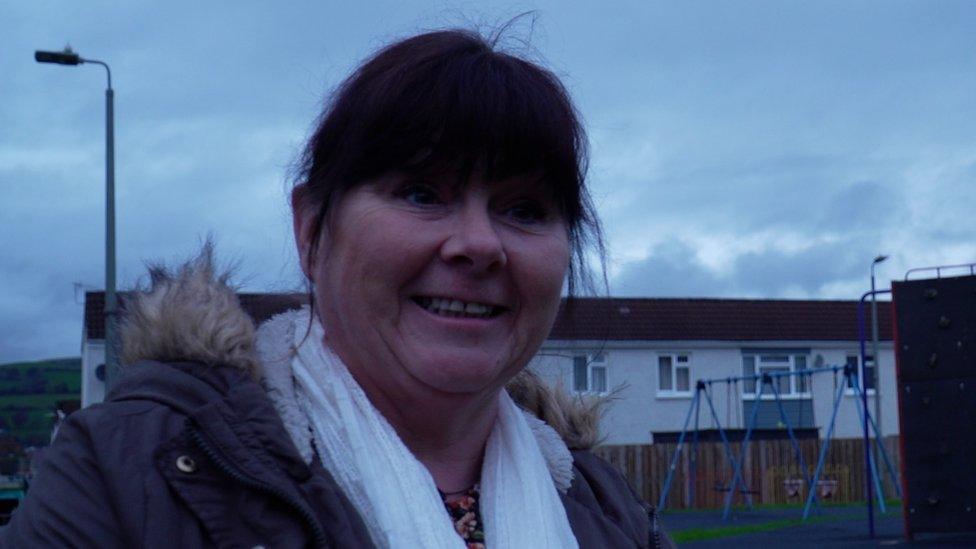
Councillor Elaine Forehead wants to see greater improvement
In Lansbury Park, where the ward St James 3 is ranked as the third most-deprived area, councillor Elaine Forehead said she was pleased they were no longer in "top spot" following investment in the estate.
However, she had hoped the area was going to improve more.
"There are still ongoing improvements so there is more to come," she said.
On the housing and access to services measures, the ward was well above the 10% most deprived areas, but on income, employment and health it still ranked among the most severely deprived.
- Published25 November 2019
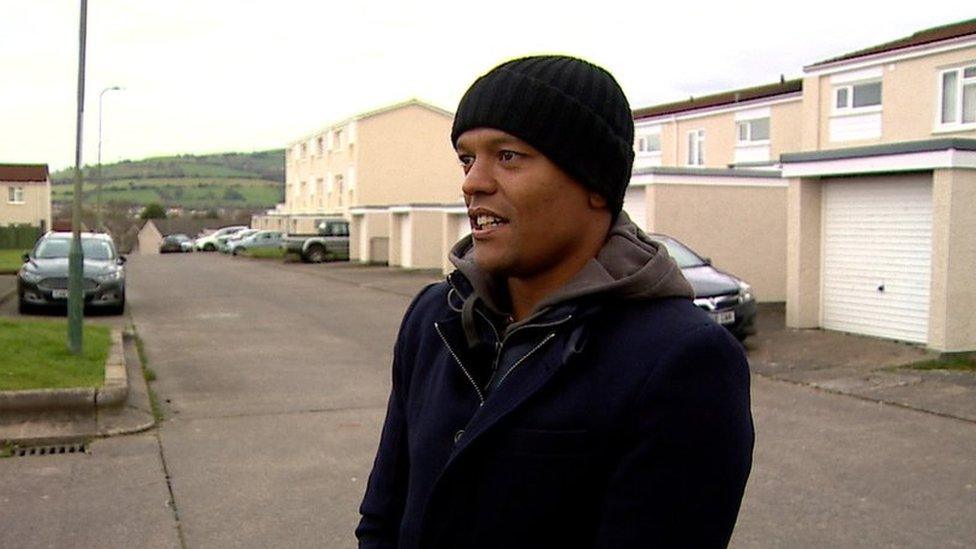
- Published14 March 2016
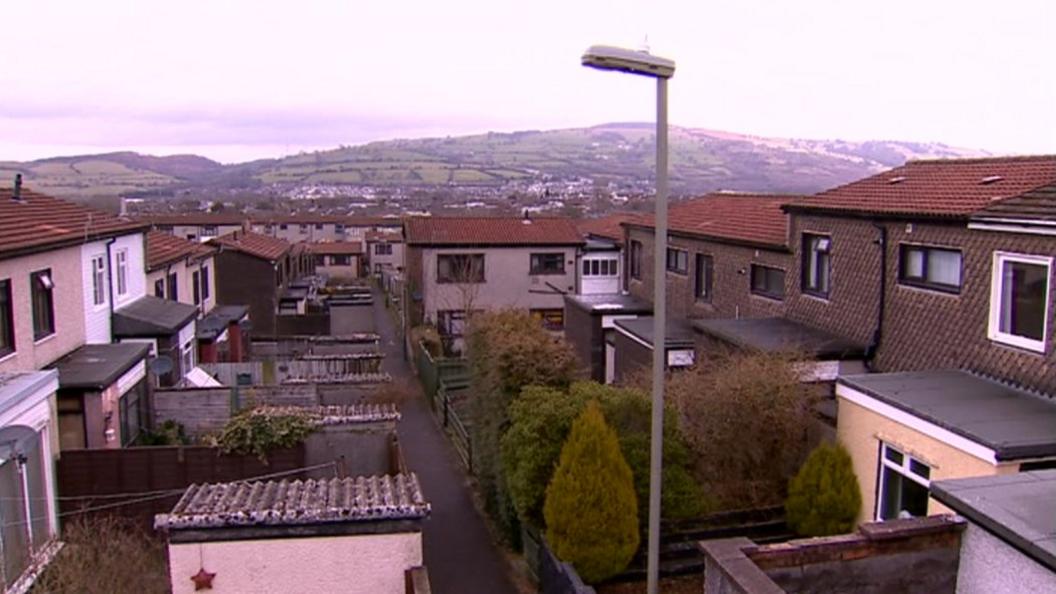
- Published21 December 2017
